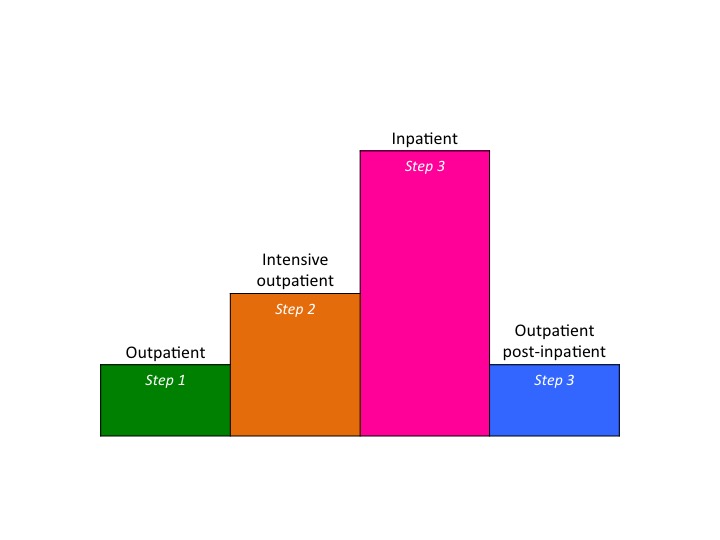In the real world, the treatment options offered to patients with eating disorders largely depend on the judgment and training of the examining clinicians, and the local availability of treatments. Although evidence-based psychological treatments such as CBT-E are available, these are not always delivered, or are applied in a manner that ‘drifts away’ from proven therapeutic techniques. In some clinical services there is an excessive emphasis on inpatient care, and it is common for patients to receive completely different treatments, in terms of both theory and content, when they change from a less intensive form of care (e.g., outpatient) to a more intensive treatment (e.g., inpatient) and vice versa. This creates discontinuity in the care pathway, and understandably disorients patients about the procedures and strategies that they need to use to overcome their eating problems.
CBT-E, being designed to treat all the diagnostic categories of eating disorders in adults and adolescents across the spectrum of care settings, offers the concrete possibility of implementing a treatment that overcomes some of the difficulties encountered in more conventional, fragmented services. The most distinctive and unique feature of this approach, also termed “multistep CBT-E”, is that the same theory and procedures are applied at each level of care (Figure). The only difference between the various steps is the intensiveness of treatment, with less unwell patients being treated using outpatient CBT-E procedures, and more severely affected suffers being channeled directly to inpatient CBT-E. With this approach, non-responders to outpatient treatment, and those who would benefit from more support but whose physical conditions do not warrant hospitalization, can be offered a more intensive form of outpatient treatment within the CBT-E framework. Thus, patients can be moved seamlessly from outpatient care to inpatient care, and then on to the final phase of outpatient treatment, with no change in the nature of the treatment itself.
This approach was first developed in Villa Garda, Garda – Verona (Italy), but similar services are also being set up in the Netherlands, Norway, Denmark, Sweden and the USA. A clinical service based on CBT-E has two main advantages. First, patients are treated with a single, well-delivered, evidence-based treatment, rather than the evidence-free “eclectic” approach common elsewhere. Second, it minimizes the problems associated with transitions from outpatient to intensive treatment, as it avoids subjecting patients to the confusing and counterproductive changes in therapeutic approach that commonly accompany such transitions. It goes without saying, however, that a different form of treatment must be recommended to any patients who do not respond to the CBT-E.
Villa Garda Eating Disorder Unit
 Figure. The Villa Garda CBT-E Clinical Service
Figure. The Villa Garda CBT-E Clinical Service






